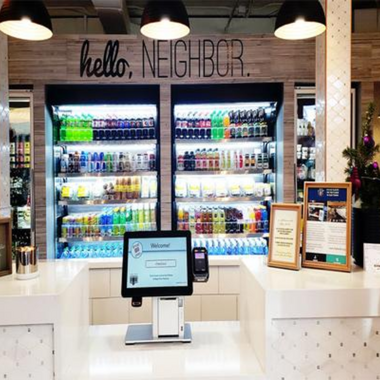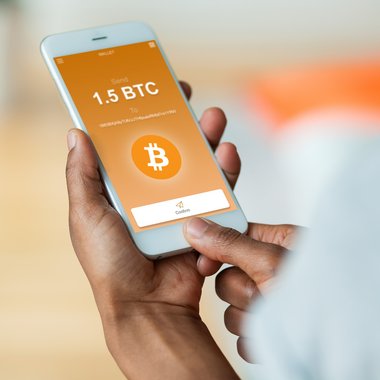
- Six minutes read
2020 vision: What's next for the payments industry?
11 trends that we can see having the most significant impact on payments in the next 12 months.
2019 was an exciting year for payments; tech innovation and the changing attitudes and expectations of consumers and businesses continue to reshape the landscape of both physical and digital commerce.
In the next 12 months we expect the evolution of payment services to continue; some of the key trends that emerged last year will become even more prominent in 2020, and new emerging technologies will also make an impact.
As a self-proclaimed payments geek, I’m excited about what’s in store and have highlighted 11 trends that we predict will play a significant part in determining the future of payments in 2020.
The growth of local payment schemes
The rise of local payment schemes to provide improved inter-bank payments in countries or regions will have a significant impact on the global payments community in the next 12 months. This is particularly true of the development of new real-time payments networks, notably in the US.
In the UK, the Faster Payments Service (reducing transaction clearing time between banks from three working days to a few seconds) that was launched in 2008 is now being replicated across the Atlantic which is a huge step-change for payments in the US.
The Clearing House has been scaling its real-time payments network throughout 2019, but this should accelerate in the next 12 months.
The Clearing House has said its objectives for 2020 include working with payments services providers, banks, and credit union to ensure that all financial institutions in the US have access to the Real-time Payments Network before the end of the year.
5G and the IoT will make a significant impact
Although the widespread commercial usage of 5G is still some way off, 2019 has seen the emergence of a number of infrastructure projects to trial the technology. There has been a lot of talk about its benefits, including faster connectivity speeds, but it could be the enablement of developing technologies such as the Internet of Things (IoT), virtual reality (VR), and augmented reality (AR) that truly make 5G a gamechanger in 2020.
For the retail sector in particular, 5G has the potential to completely transform the way the industry operates, specifically around how we shop. Whether this is making the most of AR, such as through virtual mirrors that enable consumers to see how a piece of clothing will look without actually trying it on, or tailored advertising via VR headsets. There’s a whole host of ways that high-street retailers can tap into the capabilities of 5G to improve the process of shopping at a traditional outlet.
This will include increasing the number of locations consumers will be able to make payments away from traditional checkouts, and the technology that may be used to authenticate payments, such as the potential introduction of facial recognition technology to authenticate payments in-store.
And the ability to make payments through a greater variety of platforms will extend inside consumers’ homes. IoT-enabled technology such as smart fridges and smart vehicles may become mainstream in 2020 and this will have a significant impact on the way consumers interact with the digital economy.
Faster mobile connectivity speeds should drive eCommerce sales with on the go shoppers able to make purchases almost instantly. This higher volume of online transactions will likely lead to further adoption of payment methods including mobile eWallets.
Increased adoption of voice activated technology
Building on the theme of increased adoption of IoT-enabled technology, 100 million users worldwide now have some form of voice-activated Smart Home technology such as Google Home or Amazon Alexa. This means that consumers are adopting the hardware that will enable them to shop online, pay bills, and make person-to-person transactions using voice command.
And we know the appetite to make these types of payments is growing. Earlier this year we asked consumers about making purchases using voice-activated technology; 42% of consumers said they would be comfortable making purchases using a Smart Home device, which creates a huge opportunity for retailers to engage with potential customers on a new platform in 2020.
But convincing consumers of the security of voice-activated payments will be key to growth in the next 12 months. More than half (53%) of consumers believe that voice-activated payments are quicker and more convenient than traditional payment methods for eCommerce, but barely a third (37%) think that their financial information remains secure when they make these purchases. Winning the security argument when it comes to voice-activated payments will be an immediate business priority.
Businesses committing to accepting more payment methods through a single gateway
In 2018 we surveyed small and medium eCommerce businesses to learn more about how they planned to evolve their online checkouts. The results were clear; SMBs not only need to offer consumers more ways to make payments keep up with the competition, they need to do it right now. SMBs offered four payment methods in online checkout on average in 2018, but said they planned to offer an average of six payment methods before the end of 2020.
What we have seen in 2019 and will continue to see in 2020 is merchants finding solutions to deliver on that pledge. Most notably merchants are looking to integrate digital wallets and partner with gateway providers that facilitate multiple alternative payment methods through a single integration, rather than operate multiple partnerships in tandem.
A turning point for contactless in the US
Coming into 2019 the US market was years behind many countries in the world in adoption of contactless (NFC enabled) debit and credit cards. But there is a concerted effort on the part of consumers and banks to correct this; Visa is predicting that over 100 million NFC enabled cards will be in circulation in the US by the end of 2020.
In addition to the rollout of contactless cards, one needle-mover may be the growth of the Visa Ready for Transit program. In the UK it was the introduction of contactless payments to the London Underground that sparked a significant increase in adoption; and over three million contactless payments have been made since the contactless payments pilot was launched on a number of subway services in New York in June 2019. The number of routes will increase in New York as well as launching in San Francisco and Boston in 2020.
The continuous rise of omnichannel payments
As high street businesses try to keep up with their online competitors, they are coming under increased pressure to deliver the same user experience consumers receive online. At the checkout this means offering the same breadth of payment options, and with the same streamlined user experience.
This is one reason will continue to see more omnichannel payment initiatives launching in the next 12 months. Another reason is that consumer shopping habits are shifting to preferring a more blended experience of online and offline interactions; for example browsing in a store and then making a purchase online using a smartphone while still in the shop as the price may be cheaper.
Keeping cards on file, the growth of mobile payments, and improvement in mPOS technology are all ways that digital and in-store payments are continuing to merge. And there are some more specific instances of this happening as well; for example in the DACH region credit checks for instalment payments are now available online where once this would be done manually at the checkout, reducing the time this takes from approximately half an hour to only a few minutes.
Consumers demand invisible payments
Offline, consumers are increasingly comfortable with the concept on invisible payments. Apps such as Uber, where a consumer receives an experience and can walk away without having to worry about payment, receipts, tips and change, have redefined best-practice for seamless payments.
Similarly Amazon Go continues to grab the attention of shoppers; 16 stores are now open in the US and Amazon has said that there will be large scale expansion in 2020. And a number of start-ups are replicating the Amazon model.
As these types of payments become more commonplace in 2020, consumers will increasingly demand this exciting new way to pay. Expect the number of real-world retailers and service providers looking to imitate this model to increase substantially in the next 12 months.
And so do merchants
It’s not only consumers that want to engage less regularly with their payments functions. As payments become more complicated, merchants are coming under increasing pressure to keep on top of maximizing the value of their data.
But of course, merchants don’t want to become payments and risk management experts, meaning that being able to rely on a partner that can make payments simple for them, is an increasing business concern. The payments services providers that can best manage functions such as cross-border and multi-currency payments, and delivering better conversion rates, in a seamless and trusted manner that doesn’t drain resources from merchants will be the market winners – for us that’s a fun puzzle to crack.
AI driving mass customization
Global retail powerhouses now dominate the market. But where their rise to prominence has made purchasing more accessible, customers have had to sacrifice the personal relationships with local retailers that were able to provide them with an individual experience. AI has the potential to fill the gap; by facilitating personal service but on a mass scale, consumers will feel unique and valued by getting the same treatment that they enjoy at local stores, and also receive relevant offers to them.
Payments services providers will have a vital role to play here, delivering the relevant and comprehensive data required for effective personalization through automation.
Further tech giant encroachment into the payments industry
Where there were once clearly defined boundaries between technology giants and the payments industry, those barriers are increasingly disappearing. This trend has been clear for a number of years, but will accelerate further in 2020.
Tech companies with large audiences such as Facebook and Amazon moving into the world of payments are two examples of this; the progress of Facebook Libra will continue to be of interest to the payments community, and more product announcements from Google, Apple, and Amazon will seek to eat into traditional payments providers’ market share. A subsequent consequence is that those payments companies will be forced to think about their businesses more broadly than just card or bank related payments.
Moving beyond two-factor authentication
The deadline for implementing Strong Customer Authentication (SCA) has been moved to December 2020, but that has not prevented biometric authentication for payments from growing in importance. In Lost in Transaction: The end of risk? 48% of consumers told us that they had authenticated a payment using fingerprint, facial recognition, or voice-activated technology. Among consumers aged 18-24, adoption rates are significantly higher (69%).
But this isn’t the end of the online payment authentication journey. As consumers continue to demand more security and at the same time increasingly frictionless checkouts, technologies that leverage other more passive authentication factors such a location, time of transaction, and even predicted behaviour will come to the fore.
And there will be even more exciting developments in the next year on top of these, but hopefully this gives you a taste of what we’re expecting to see take the payments world by storm in the next 12 months. I’m already looking forward to reviewing these trends at the end of the year and reflecting on how far the industry has come in 2020.
Click here to read our review of our 2019 payments industry predictions.




